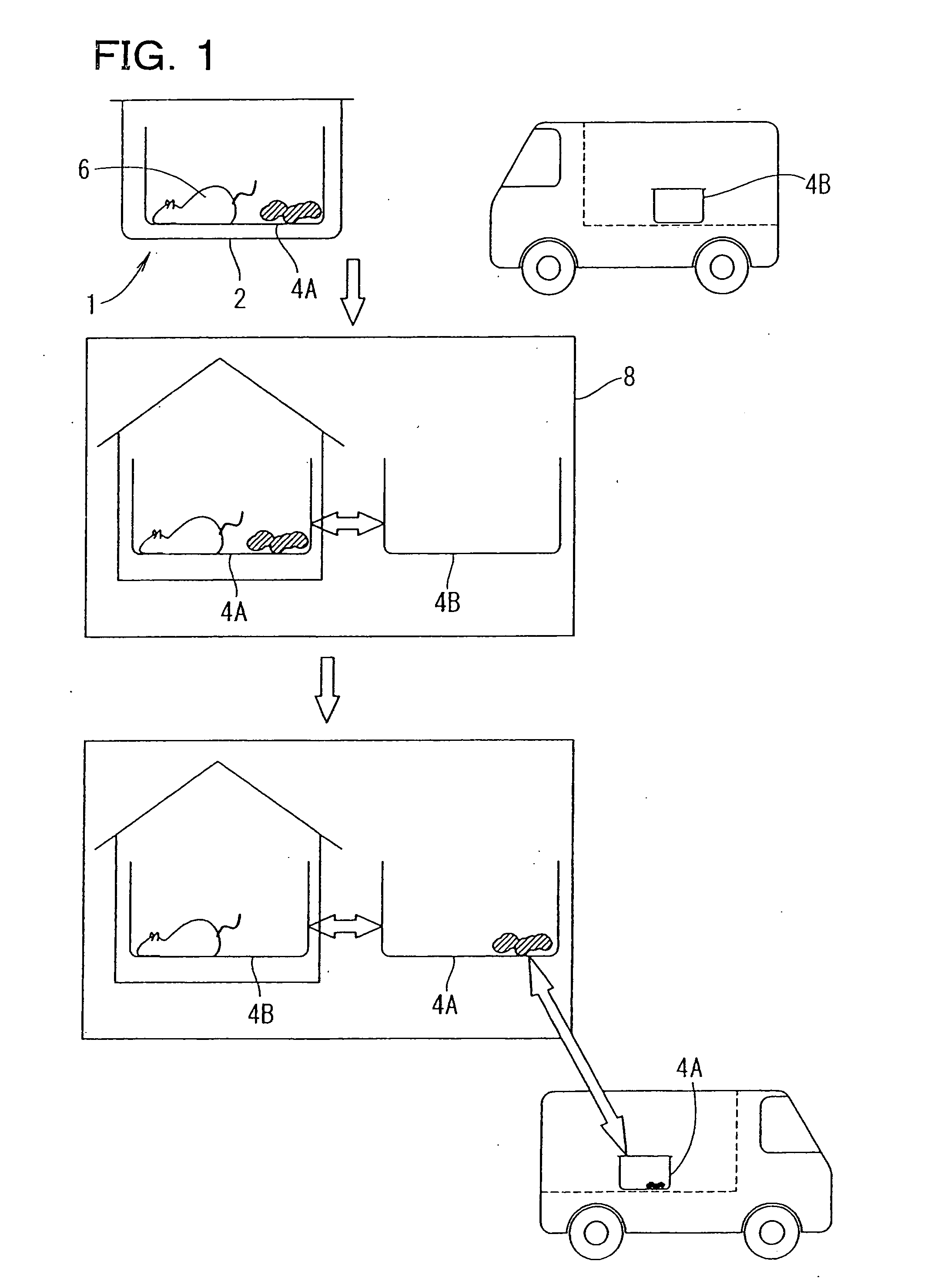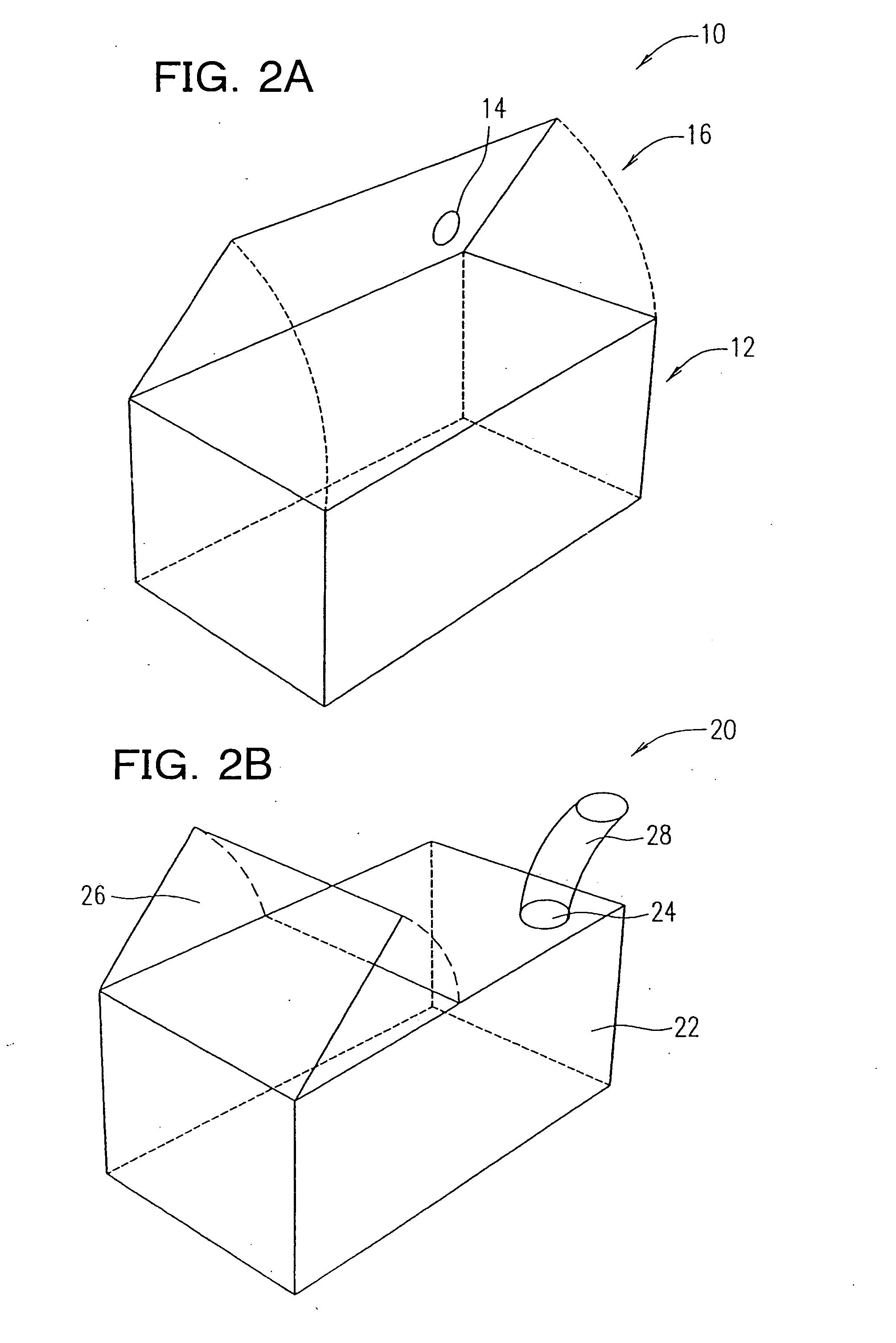Animal breeding system and utilization of the system
a technology for animal breeding and system, applied in the field of animal breeding system, can solve the problems of complex, costly, requiring personnel expenses, complex special systems, etc., and achieve the effect of not being easily changed in design, and reducing the number of animals
- Summary
- Abstract
- Description
- Claims
- Application Information
AI Technical Summary
Benefits of technology
Problems solved by technology
Method used
Image
Examples
examples
[0569] Hereinafter, the present invention will be described with reference to relevant drawings.
[0570]FIG. 2A shows an exemplary animal breeding unit 10 according to the present invention. The animal breeding unit 10 includes a housing 12 having an opening 14 provided thereon as a connecting section. The housing 12 isolates the inside thereof from an external environment. The housing 12 may be formed of a plastic material such as, for example, polycarbonate, a metal material such as, for example, aluminum, or the like. The opening 14 may be used both for air supply and air discharge. The housing may be connected to an environment maintaining device (not shown) via the opening 14. A lid portion 16 which is a part of the housing 12 is openable / closable. The housing 12 may preferably have a function of maintaining airtightness, in addition to the function of isolation. When the air breeding unit 10 is connected to a portable environment maintaining device via the opening 14, aseptic e...
PUM
 Login to View More
Login to View More Abstract
Description
Claims
Application Information
 Login to View More
Login to View More - R&D
- Intellectual Property
- Life Sciences
- Materials
- Tech Scout
- Unparalleled Data Quality
- Higher Quality Content
- 60% Fewer Hallucinations
Browse by: Latest US Patents, China's latest patents, Technical Efficacy Thesaurus, Application Domain, Technology Topic, Popular Technical Reports.
© 2025 PatSnap. All rights reserved.Legal|Privacy policy|Modern Slavery Act Transparency Statement|Sitemap|About US| Contact US: help@patsnap.com



